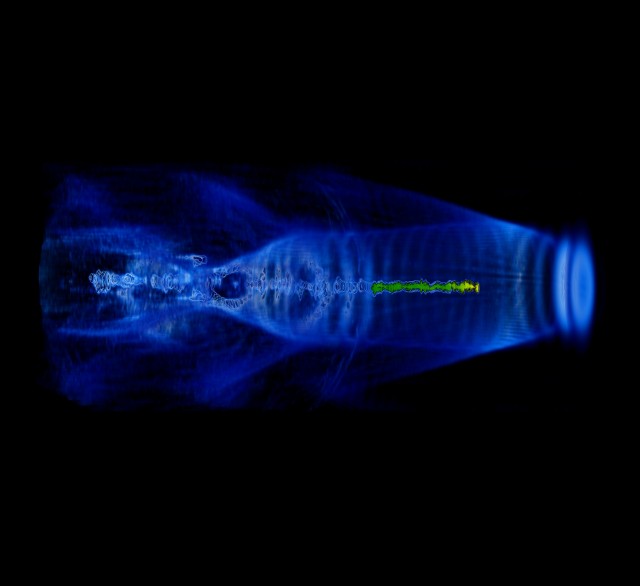Fast beam of neutral atoms created using lasers and plasma
Ars Technica » Scientific Method 2013-01-29

Electrically charged particles are relatively easy to accelerate using electric and magnetic fields. Neutral particles cannot be steered in the same way, which is a bit disappointing, since they are useful experimentally due to their much greater ability to pierce target materials. A promising technique uses very short pulses of intense laser light to accelerate neutral particles, though up until now it has only achieved low energy transfer.
A new experiment has achieved neutral particle energies on the order of a billion times greater than prior efforts. R. Rajeev and colleagues managed this by accelerating particles while they were charged, and then transferring in electrons to neutralize the charge. This method has the advantage of being compact, and therefore useful for applications such as nanolithography; however, the authors argued their approach can be generalized for other purposes.
Laser acceleration works by bombarding atoms with light pulses to strip electrons off, creating a plasma—a neutral gas of ions and electrons. Since the electrons are a lot less massive than the ions, you can tune the laser pulses in a precise way that separates them. The electrons shoot off, leaving behind a gas of positively charged atoms moving in coherent waves.
Read 6 remaining paragraphs | Comments